(Nucleotide binding oligomerization domain containing 2)
Gene description The NOD2 gene encodes a protein that plays an important role in immune system function. It helps protect the body against foreign invaders by helping control immune responses and inflammatory reactions. It is also involved in autophagy and programmed cell death (Ref). Gene function Involved in gastrointestinal immunity. Upon stimulation by muramyl dipeptide (MDP), a fragment of bacterial peptidoglycan, binds the proximal adapter receptor-interacting RIPK2, which recruits ubiquitin ligases as XIAP, BIRC2, BIRC3 and the LUBAC complex, triggering activation of MAP kinases and activation of NF-kappa-B signaling. This in turn leads to the transcriptional activation of hundreds of genes involved in immune response. Required for MDP-induced NLRP1-dependent CASP1 activation and IL1B release in macrophages (PubMed:18511561). The NOD2 gene provides instructions for making a protein that plays an important role in immune system function. The NOD2 protein is active in some types of immune system cells (including monocytes, macrophages, and dendritic cells), which help protect the body against foreign invaders such as viruses and bacteria. The protein is also active in several types of epithelial cells, including Paneth cells, which are found in the lining of the intestine. These cells help defend the intestinal wall against bacterial infection. The NOD2 protein has several critical functions in defending the body against foreign invaders. The protein is involved in recognizing certain bacteria and stimulating the immune system to respond properly. When triggered by specific substances produced by bacteria, the NOD2 protein turns on (activates) a protein complex called nuclear factor-kappa-B. This protein complex regulates the activity of multiple genes, including genes that control immune responses and inflammatory reactions. An inflammatory reaction occurs when the immune system sends signaling molecules and white blood cells to a site of injury or disease to fight microbial invaders and facilitate tissue repair. The NOD2 protein also appears to play a role in a process called autophagy, which cells use to surround and destroy bacteria and viruses. In addition to protecting cells from infection, autophagy is used to recycle worn-out cell parts and break down certain proteins when they are no longer needed. This process is also involved in the self-destruction of cells (apoptosis). Disease association Blau syndrome At least 17 mutations in the NOD2 gene have been found to cause Blau syndrome, an inflammatory disorder that primarily affects the skin, joints, and eyes. These mutations change single protein building blocks (amino acids) in the NOD2 protein. All of these mutations result in a version of the NOD2 protein that is overactive, which can trigger an abnormal inflammatory reaction and cause swelling and irritation. However, it is unclear how the abnormally active protein causes the specific pattern of inflammation affecting the skin, joints, and eyes that is characteristic of Blau syndrome. NOD2 gene mutations can also cause early-onset sarcoidosis, a similar condition that some researchers consider to be a non-inherited version of Blau syndrome. Crohn disease Approximately 40 variations in the NOD2 gene have been associated with an increased risk of Crohn disease, a complex disorder of the digestive system. In particular, NOD2 gene changes are associated with a form of Crohn disease that affects the lower part of the small intestine (the ileum) in populations of northern European descent. The most common variation, written as 3020insC or 1007fs, leads to the production of a NOD2 protein that is slightly shorter than normal. Other common variations change single amino acids in the NOD2 protein. It is unclear how these genetic changes increase the risk of developing Crohn disease. Studies suggest that changes in the NOD2 gene prevent the protein from recognizing bacteria, allowing these microbes to grow unchecked and invade cells that line the intestine. An abnormal immune response to these bacteria may contribute to chronic inflammation and the digestive problems characteristic of Crohn disease. cancers A few studies have suggested a possible association between changes in the NOD2 gene, particularly the common variation 3020insC, and the development of several types of cancer. Although some of these studies found an increased risk of cancer in people with a NOD2 gene variation, other research found no such association. It is unclear how changes in this gene might contribute to cancer risk. other disorders Several studies have considered variations in the NOD2 gene as a possible risk factor for a condition called graft-versus-host disease (GVHD). Graft-versus-host disease can occur following certain cancer treatments, such as allogeneic stem cell transplantation. This procedure, which is typically used to treat cancers of the blood and immune system, replaces a patient’s diseased blood-forming cells (a type of stem cell) with stem cells from a healthy donor. If the donor’s stem cells (the graft) recognize the patient’s body (the host) as foreign, they may attack organs and tissues such as the liver, digestive system, and skin. Graft-versus-host disease is the term used to describe this potentially severe reaction. A few studies have suggested that variations in the NOD2 gene influence the risk of developing severe complications of graft-versus-host disease following an allogeneic stem cell transplant. The presence of NOD2 gene variations in both the stem cell donor and the recipient is associated with the greatest risk of a severe reaction. However, other research has found no relationship between NOD2 gene changes and the risk of developing graft-versus-host disease. Advanced Information Monocytes-specific.
The following transcription factors affect gene expression:
Tissue specificity:
Gene Pathways:
Molecular Function:
Biological Processes:
